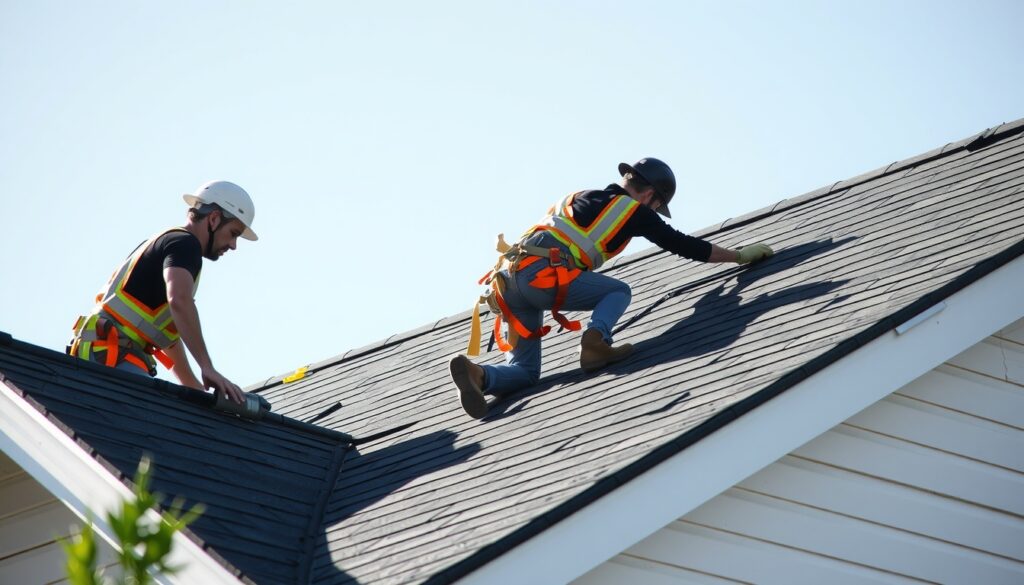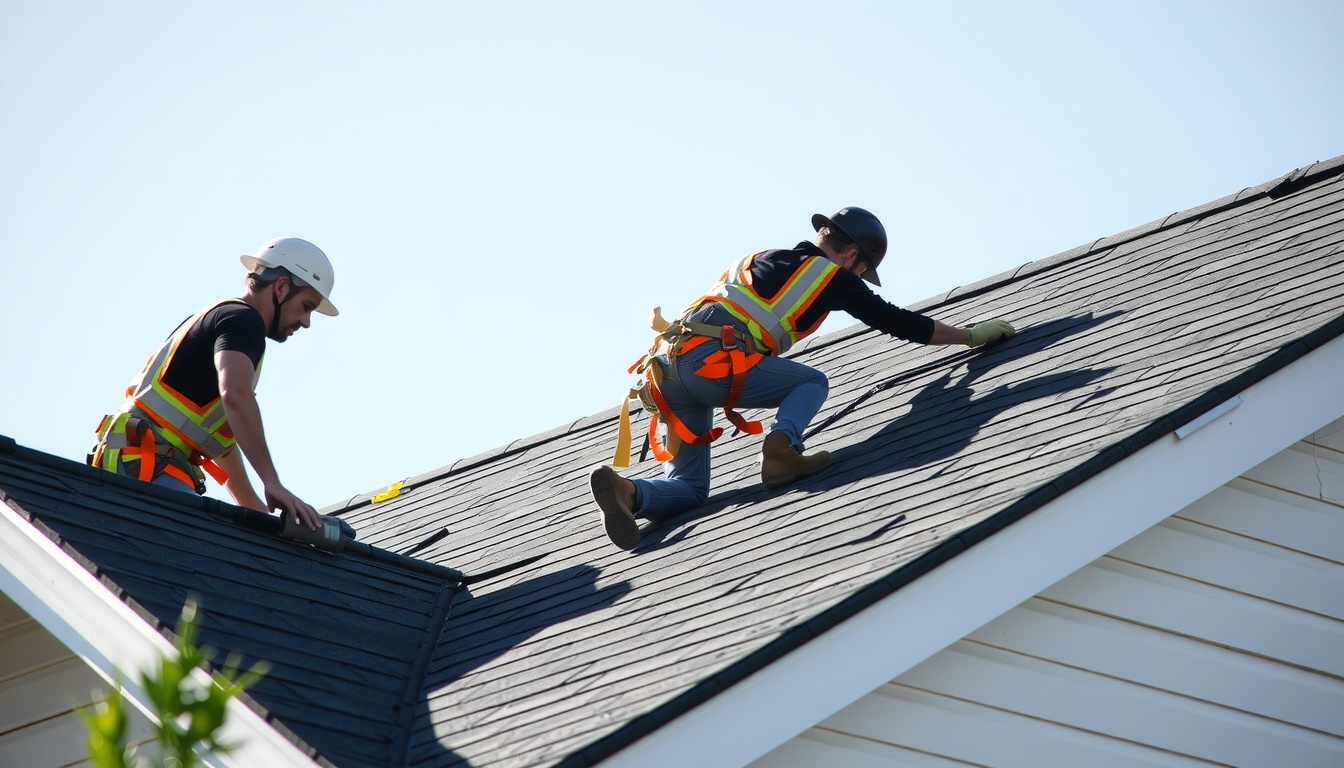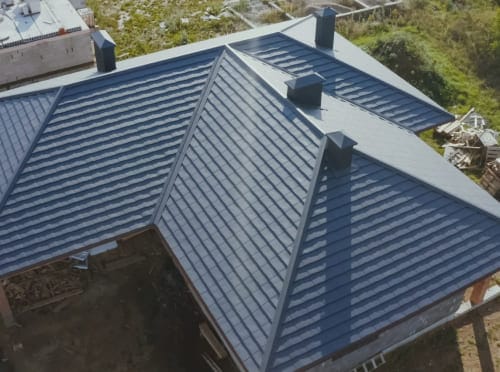In 2025, roofing choices are evolving faster than ever, driven by new materials, smarter designs, and a focus on durability. Homeowners today want solutions that cut energy bills, withstand unpredictable weather, and adapt to changing lifestyles.
If you’re weighing a roof replacement or planning a new build, knowing the latest trends can help you make the best choice for you. At JP Carroll Roofing, we’ve been tracking these shifts closely, and we’re here to share the top trends you’ll want to consider for your next roof project.
Energy-Efficient Reflective Roofing
Heat-reflective roofing, commonly called “cool roofing.” Cool roofing products reflect more sunlight and keep your attic cooler on sunny days.
Popular choices include:
- Reflective metal panels
- Light-toned asphalt shingles
- Clay tiles treated to resist heat buildup
- TPO (thermoplastic polyolefin) membranes
- ENERGY STAR®-rated coated asphalt shingles
Even if you have a darker roof, adding a reflective coating to it can help cut your energy use without a full replacement. Also, if you live in a place with hot summers, an energy‑efficient roof can make a real difference in comfort and cost.

Flat and Low‑Slope Roofing Features
Flat and low‑slope roofs are common on commercial buildings and modern home designs. Once found mostly on commercial buildings, these types of roofs are growing in residential use thanks to improved single-ply membranes (like TPO and PVC) and flexible rubber (EPDM).
These materials resist water, reflect heat, and stay flexible in cold weather. Flat or gently sloped sections are ideal for:
- Solar panel installations
- Rooftop decks or green gardens
- Housing HVAC equipment
Some systems even use gravel-free “cool membranes” that minimizes debris accumulation, cutting down on maintenance time.
Flat and low-slope roofs are ideal for installing solar panels, creating rooftop decks, green roof gardens, or housing essential equipment like HVAC units. Some builders even incorporate gravel-free “cool membranes” that shed debris naturally, reducing maintenance time.
If your property layout supports a flat roof section, this can add functional outdoor space without sacrificing style.
Integrated Solar Shingles and Solar-Ready Designs
Not quite ready to go solar? Solar-ready roofs come pre-framed and wired for quick panel installation whenever you decide to add them.
Even if you do not plan to add panels right away, investing in a “solar‑ready” roof makes it easier later on. Solar‑ready roofs include reinforced structures and extra wiring that simplify panel installation down the road.
Of course, solar energy isn’t just about panels anymore. Solar shingles look like regular shingles and fit seamlessly into your roof’s design. These capture sunlight and turn it into electricity without the bulky racks of older solar panels.
Architectural Shingles
Architectural asphalt shingles remain a popular pick for 2025. Thicker than three-tab shingles, architectural asphalt shingles mimic the depth of natural slate or wood shake without the maintenance headaches.
Architectural shingles come in rich color blends—think charcoal flecked with blue or forest green with brown undertones—so your roof pairs beautifully with brick, stone, or siding.
Beyond looks, these products often carry longer warranties and perform better in high winds than basic three-tab shingles.
Sustainable Roofing Materials
Green building practices are influencing roof choices. Many homeowners want sustainable roofing materials made from recycled content or products that can be recycled at the end of their life.
A sustainable roof starts with materials that are responsibly sourced, recyclable, or made from recycled content. Many metal roofing materials are recyclable. Even clay and concrete tiles, prized for their longevity, can be reclaimed and reused.
For urban homes and tight lots, green roofs with living vegetation provide natural insulation, reduce stormwater runoff, and improve air quality. Choosing sustainable roofing options cuts waste and lowers your environmental footprint without sacrificing durability or style.
Resilience-Focused Roof Systems
In 2025, property owners are protecting their homes with resilience-focused roofing solutions, including:
- Impact-rated shingles
- Stronger flashing systems
- Reinforced decking
- Hurricane ties
- Proper underlayment
- Better edge sealing
Class 4-rated shingles can resist hail up to two inches in diameter and are increasingly common even in non-storm zones. Even if you are not in a hail‑prone zone, these shingles offer extra protection against flying debris and severe wind.
At the same time, Class A fire-rated materials—such as composite asphalt, metal, and slate—offer top marks for fire resistance. Fire safety is more than a code issue—it’s a concern for homeowners across the region.
An upgraded system helps prevent leaks during heavy rain or ice events and can reduce repair costs over time. Some insurance companies even offer lower premiums when these improvements are installed.
Smart Roofing Inspections
Roofing maintenance is getting a high-tech boost. For example, drones equipped with high-resolution cameras allow contractors to inspect steep or cluttered roofs safely and quickly.
Artificial intelligence software can analyze imagery to spot small cracks, loose tiles, or failed seals before they become leaks. Wireless sensors under your shingles can also alert you to shifts in moisture or temperature, all fed into homeowner apps or contractor dashboards for round-the-clock monitoring.
Long‑Term Durability and Warranties
In 2025, homeowners are focusing more on value and less on initial price alone. Homeowners are thinking long-term, which means warranty options are part of the decision.
Materials now come with lifetime warranties, extended coverage, or transferable plans and can reduce the need for future replacements. These warranties typically cover both materials and labor. Choosing a certified installer means you fully benefit from the manufacturer’s promise.
When you plan a roofing project, ask about material warranties and installer certifications to protect your investment. Pay close attention to what’s covered, how claims are handled, and whether warranties continue if you ever sell the home.
Advanced Water-Management Features
Many modern roofs include water-management features, such as:
- Integrated gutters: Integrated gutters can feed cisterns or planter boxes for rainwater reuse, so homeowners can use captured water for landscape irrigation or gray-water systems
- Self-cleaning coatings: Self-cleaning coatingsresist algae growth or debris accumulation, preventing clogs year-round
- Underlayment membranes: Underlayment membranes with built-in water barriers add a secondary line of defense against leaks
These enhancements guard against moisture buildup and pooling, especially on roofs with dormers, valleys, or multiple pitch changes.
Call JP Carroll Roofing for All Your Roofing Needs
At JP Carroll Roofing, we tailor solutions to your home’s climate, style, and budget. Whether you’re aiming to save energy, prepare for storms, or boost curb appeal, our team will guide you through the best options.
Contact us today for a free estimate. We’ll review your home’s needs, walk you through material samples, and more. Let’s make your next roof a smart investment that keeps you comfortable, protected, and confident for decades to come.


